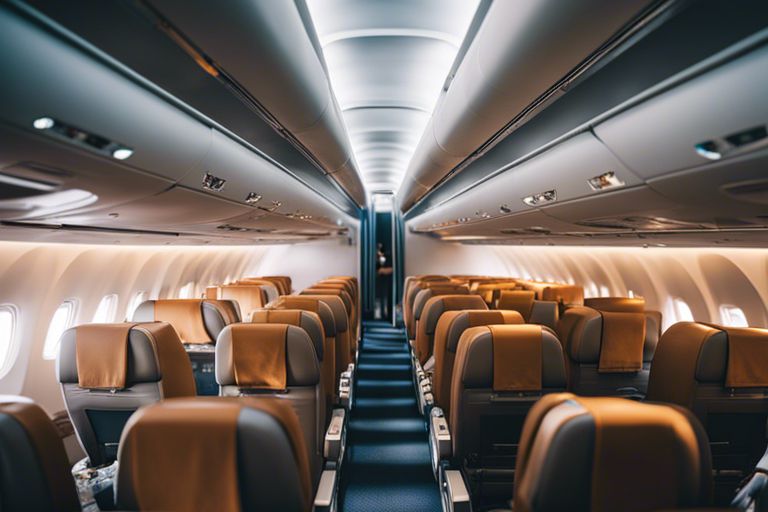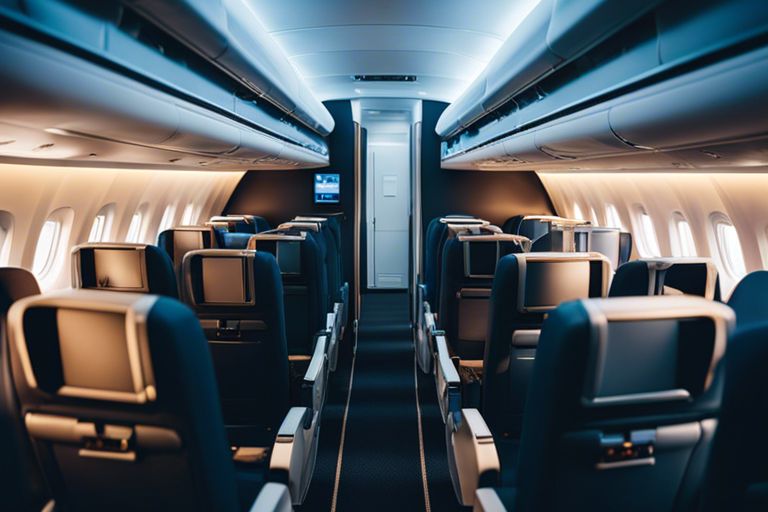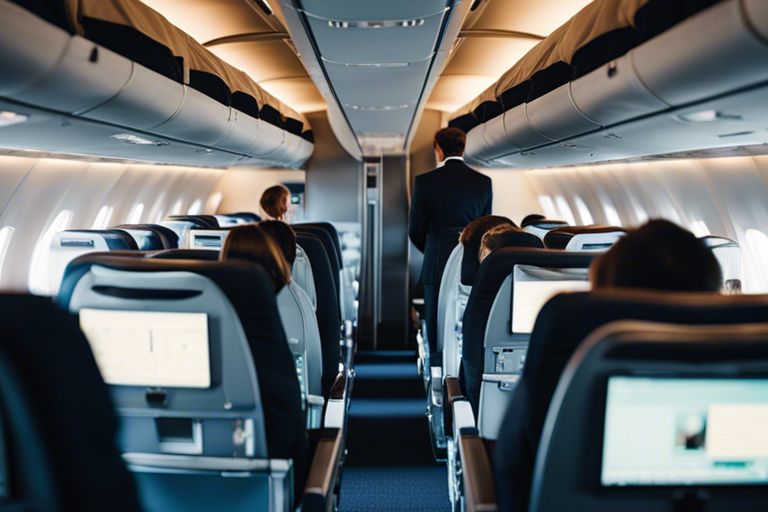Table of Contents
Curious about the safety of domestic air travel? You’re not alone. While flying is statistically one of the safest modes of transportation, it’s natural to have concerns about the potential risks involved. In this post, we’ll explore the various safety measures in place to ensure your well-being when you take to the skies, and address common misconceptions about air travel safety. From turbulence and mechanical failures to emergency procedures and security protocols, we’ll provide you with the information you need to confidently assess the safety of domestic air travel.
Key Takeaways:
- Stringent Safety Measures: Domestic air travel adheres to strict safety protocols and regulations set by the Federal Aviation Administration, ensuring the security of passengers and crew.
- Low Accident Rates: Statistics show that domestic air travel has a significantly low accident rate, making it a safe mode of transportation compared to other alternatives.
- Advanced Technology: Modern aircraft are equipped with state-of-the-art technology, such as collision avoidance systems and advanced weather forecasting, to enhance safety during flights.
- Industry Compliance: Airlines and aircraft undergo regular maintenance checks and safety inspections to maintain compliance with industry standards and ensure safe travel for passengers.
- Experienced Pilots and Crew: Highly trained pilots and crew members, along with stringent hiring standards, contribute to the overall safety of domestic air travel.

Understanding the Aviation Industry’s Safety Measures
Even though the idea of flying thousands of feet above the ground can seem daunting, it’s essential to understand that the aviation industry has extensive safety measures in place to ensure your safety during domestic air travel. By comprehending the regulatory frameworks and oversight, as well as the airline operational safety procedures, you can gain a better understanding of the precautions taken to make air travel one of the safest modes of transportation available to you.
Regulatory Frameworks and Oversight
When it comes to ensuring the safety of domestic air travel, regulatory frameworks and oversight play a crucial role. All airlines must comply with strict regulations set by aviation authorities, such as the Federal Aviation Administration (FAA), which oversee and monitor the industry. These regulations cover everything from aircraft maintenance and pilot training to airport security and air traffic control. The FAA continuously evaluates and updates these regulations to ensure that the highest safety standards are maintained, ultimately striving to protect you throughout your journey.
Airline Operational Safety Procedures
Within the aviation industry, airlines also implement their operational safety procedures to further enhance your safety while traveling domestically. These procedures encompass a wide range of protocols, including regular aircraft maintenance, pre-flight safety checks, crew training, and emergency response plans. Airlines invest significant resources into ensuring that their operational safety procedures are thorough and up to date, with the primary goal of keeping you safe from potential hazards. By adhering to these stringent measures, airlines strive to provide you with a secure and comfortable flying experience.

Statistical Analysis of Domestic Air Travel Safety
One way to gauge the safety of domestic air travel is to consider statistical data. This can give you a better understanding of the level of risk involved and help you make an informed decision about whether or not to fly domestically.
If you want more information on air travel during the COVID-19 pandemic, you can read Can you fly domestic in the US with Covid?
Historical Data and Trends
Historical data on domestic air travel safety shows a consistent improvement in safety measures and overall accident rates. According to the National Transportation Safety Board, the number of accidents and incidents on domestic flights has steadily declined over the past few decades. This trend can be attributed to advancements in technology, stricter safety regulations, and improved training for pilots and other aviation personnel. While accidents do still occur, they are relatively rare, and the aviation industry continues to make safety a top priority.
Comparison with Other Modes of Transport
When comparing domestic air travel with other modes of transport, it’s important to consider the safety records of each. According to the National Safety Council, the fatality rate per passenger mile is significantly lower for air travel compared to other modes such as driving or biking. While incidents like plane crashes may receive a lot of media attention, the statistics show that flying is actually one of the safest ways to travel. However, it’s important to note that the COVID-19 pandemic has introduced new considerations for air travel safety, such as the risk of virus transmission in enclosed spaces.
Passenger Roles in Domestic Air Travel Safety
To ensure the safety of domestic air travel, passengers play a crucial role in following guidelines and protocols set forth by airlines and airport authorities. By understanding your responsibilities and practicing in-flight safety best practices, you can contribute to a secure and pleasant travel experience for yourself and those around you.
Pre-flight Responsibilities and Procedures
Before embarking on your domestic air travel journey, it is important to familiarize yourself with pre-flight responsibilities and procedures. This includes checking in on time, adhering to airline baggage restrictions, and following security protocols at the airport. It is your responsibility to ensure that you arrive at the airport with ample time to complete these pre-flight tasks. By doing so, you contribute to the efficient and secure operation of the air travel system. Additionally, following security procedures and guidelines helps to minimize the risk of potential threats and ensures a smooth boarding process for all passengers.
In-Flight Safety Best Practices
Once onboard your domestic flight, it is essential to adhere to in-flight safety best practices to ensure the safety of yourself and others. This includes paying attention to the safety briefing provided by the flight crew, familiarizing yourself with the location of emergency exits, and following crew instructions during the flight. Additionally, it is important to fasten your seatbelt during taxi, takeoff, and landing, and to stow your carry-on items in the overhead compartments or under the seat in front of you. By proactively practicing these in-flight safety measures, you contribute to a secure and organized flight environment. Your cooperation in following safety protocols also plays a vital role in the event of unexpected turbulence or emergencies, helping to maintain a safe and controlled cabin environment.
Mitigating Risks and Future of Air Travel Safety
Not only has air travel become the safest mode of transportation, but the industry is continually working to make it even safer. By understanding the potential risks and how they can be mitigated, you can have peace of mind when flying. Here’s a look at some of the innovations in safety technology and ongoing improvements in air travel safety.
Innovations in Safety Technology
When it comes to ensuring your safety in the air, airlines and aviation authorities are constantly investing in new technologies to mitigate risks. For example, the introduction of advanced radar systems and weather forecasting tools has significantly improved the ability of pilots to navigate through hazardous weather conditions. Additionally, aircraft design and engineering have made major advancements, allowing for stronger and safer structures that can withstand a wide range of unexpected situations. Furthermore, the use of real-time data monitoring and analysis has enabled airlines to identify and address potential safety issues before they become major concerns. These innovations are aimed at providing you with the highest level of safety and security during your air travel.
Emerging Threats and Ongoing Improvements
While air travel safety has come a long way, it’s important to remain aware of potential emerging threats and ongoing improvements. Cybersecurity is becoming an increasingly important aspect of air travel safety, as the integration of digital systems in aircraft operations opens up new vulnerabilities. The industry is actively working to address these concerns and implement robust cybersecurity measures to protect against potential attacks. Moreover, the ongoing improvements in pilot training and air traffic control systems continue to enhance overall safety in the skies. With a focus on detecting and addressing potential risks, the aviation industry remains committed to maintaining the highest safety standards for you and your fellow passengers.
Conclusion
Hence, domestic air travel is generally considered to be safe, with numerous safety measures and regulations in place to ensure the well-being of passengers. The rigorous training and experience of pilots, crew members, and air traffic controllers also contribute to the overall safety of air travel. Additionally, advancements in technology and the implementation of strict maintenance protocols further enhance the safety of domestic flights. Ultimately, while there may be occasional incidents, statistically, air travel remains one of the safest modes of transportation. Your safety and well-being are paramount to airlines and regulatory authorities, and every effort is made to ensure a secure and comfortable travel experience for you.
FAQ
Q: Is domestic air travel safe?
A: Yes, domestic air travel is generally considered safe. Airlines adhere to strict safety regulations and undergo regular inspections to ensure the safety of their aircraft. Additionally, pilots and aircrew undergo rigorous training and must meet stringent certification requirements.
Q: How are potential safety hazards addressed in domestic air travel?
A: Airlines have comprehensive safety protocols in place to address potential hazards. These include regular maintenance and upkeep of aircraft, adherence to strict operational procedures, and continuous monitoring of weather conditions and air traffic. Additionally, airports and air traffic control systems play a crucial role in ensuring the safety of domestic air travel.
Q: Are there any specific safety measures passengers should be aware of when traveling domestically by air?
A: Passengers can contribute to the safety of domestic air travel by adhering to the guidelines and instructions provided by airline staff. This includes following all pre-flight safety briefings, fastening seat belts when required, and complying with any safety-related directives from the flight crew. It is also important for passengers to report any safety concerns or suspicious activities to airline staff or authorities.

